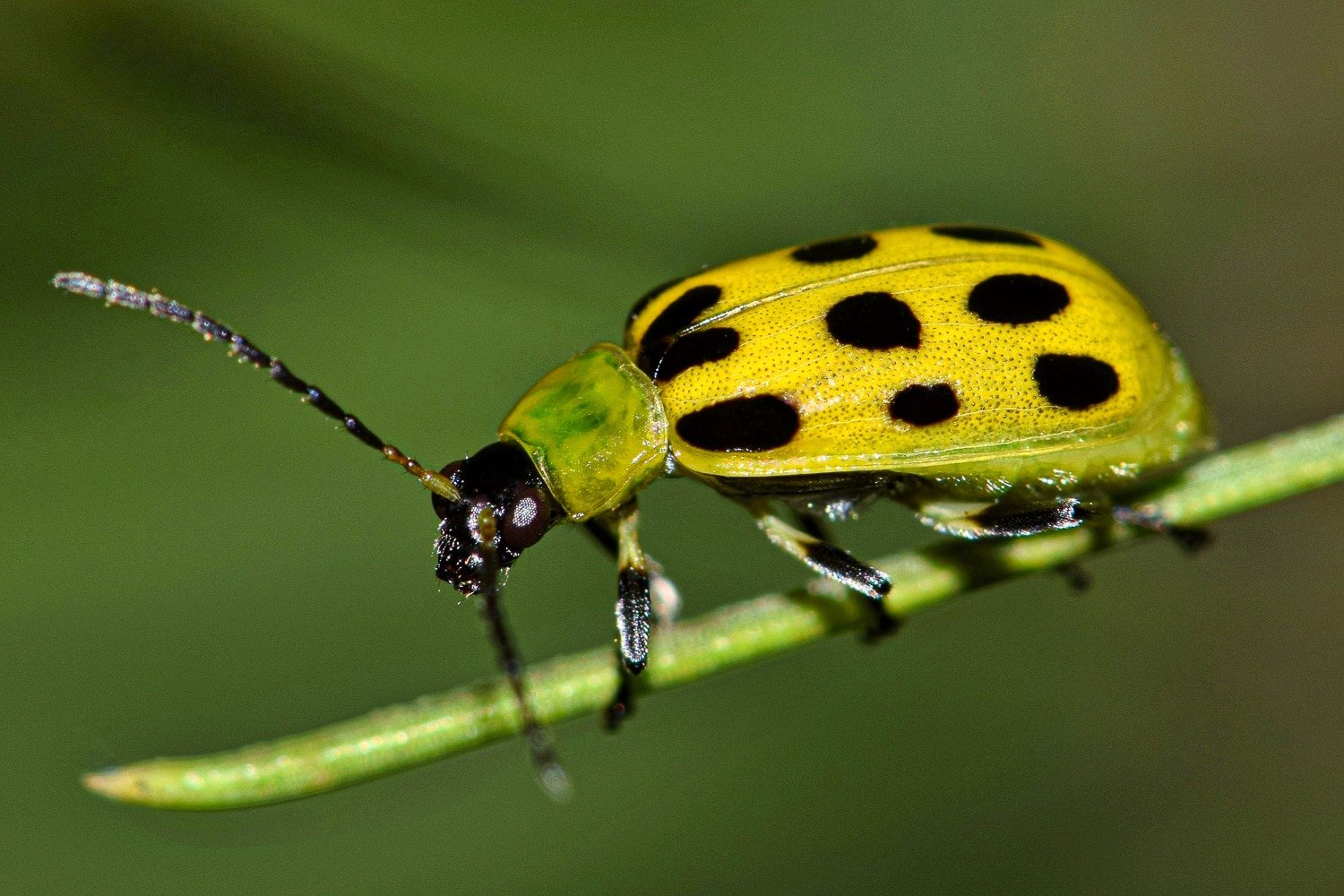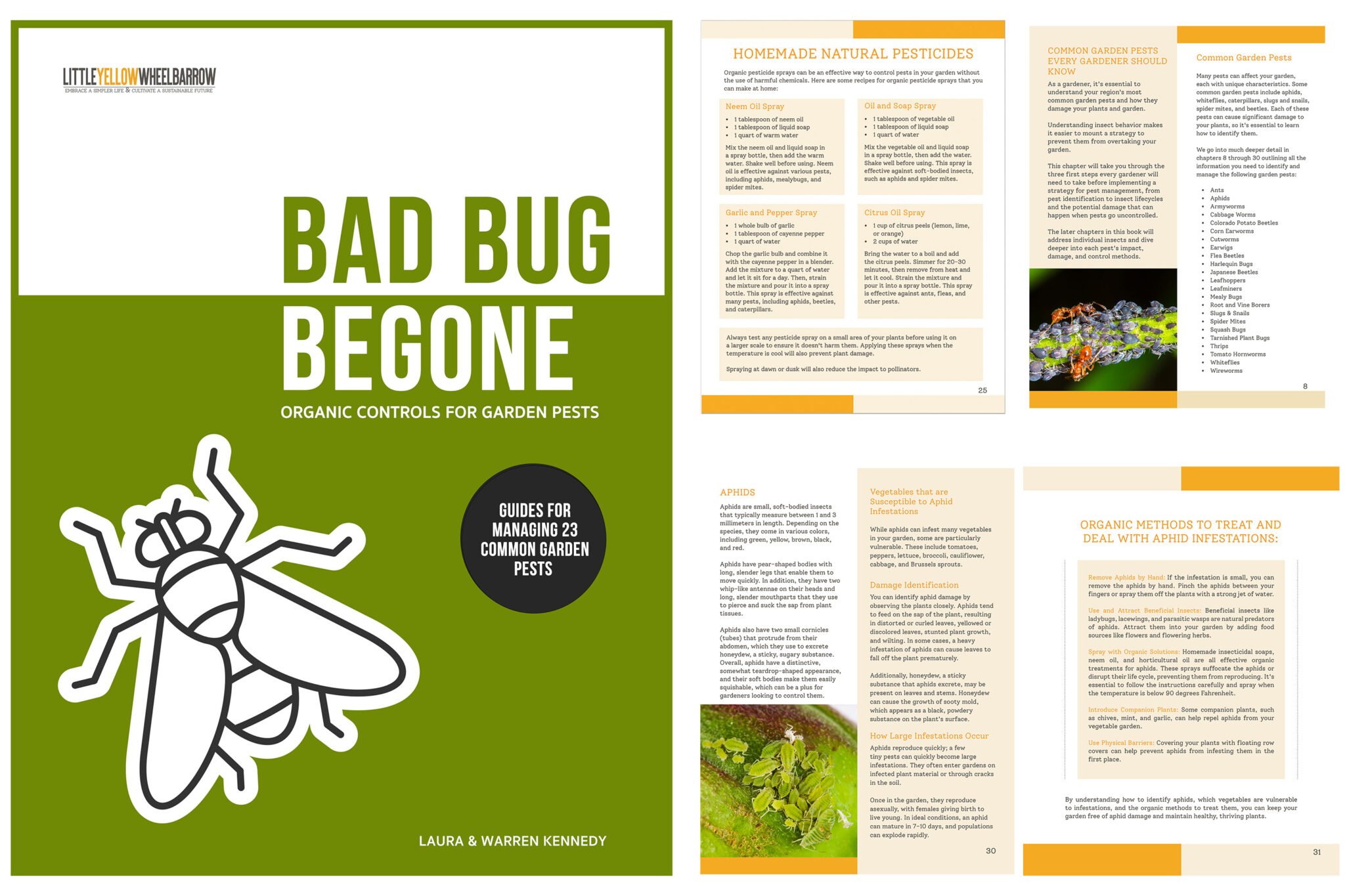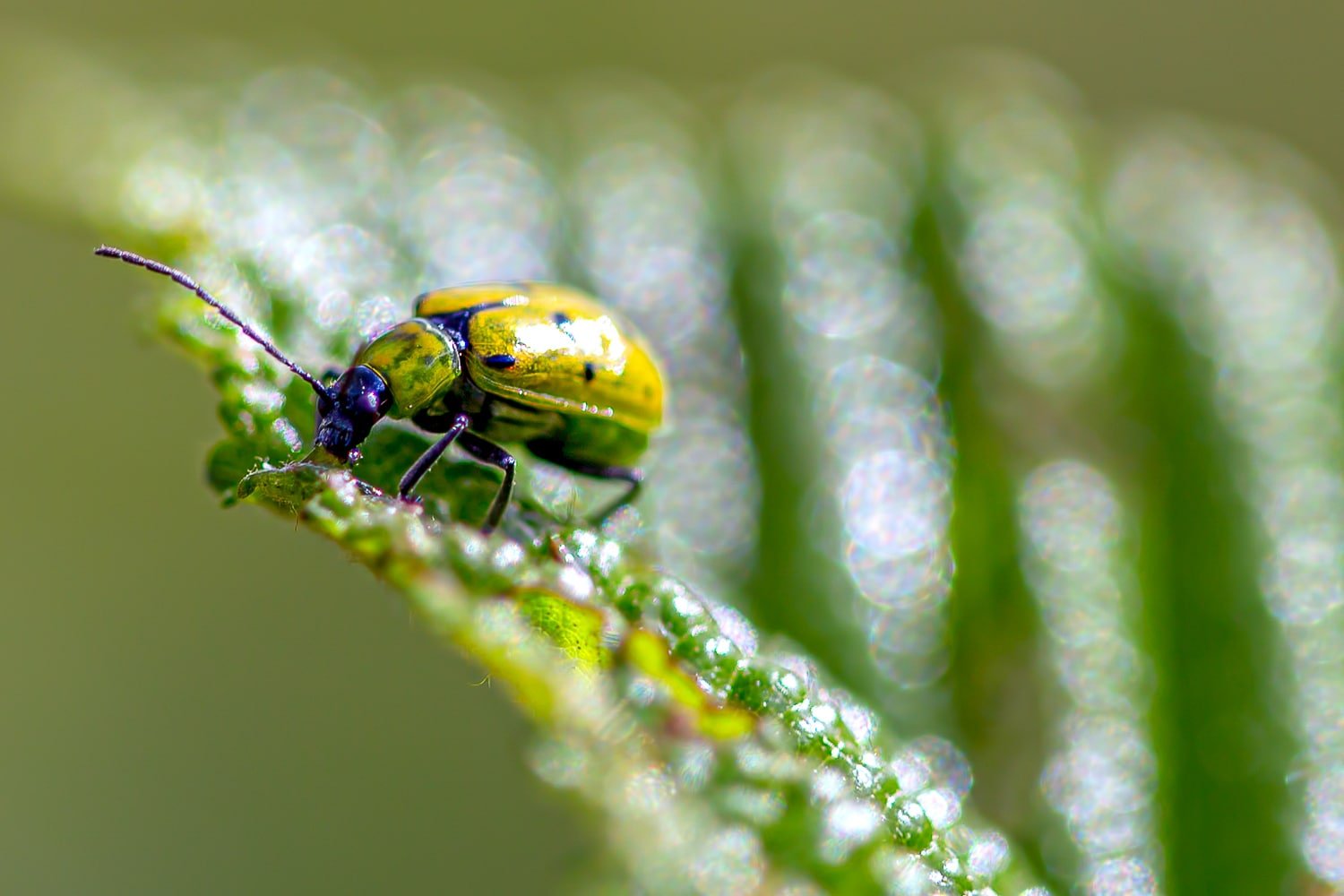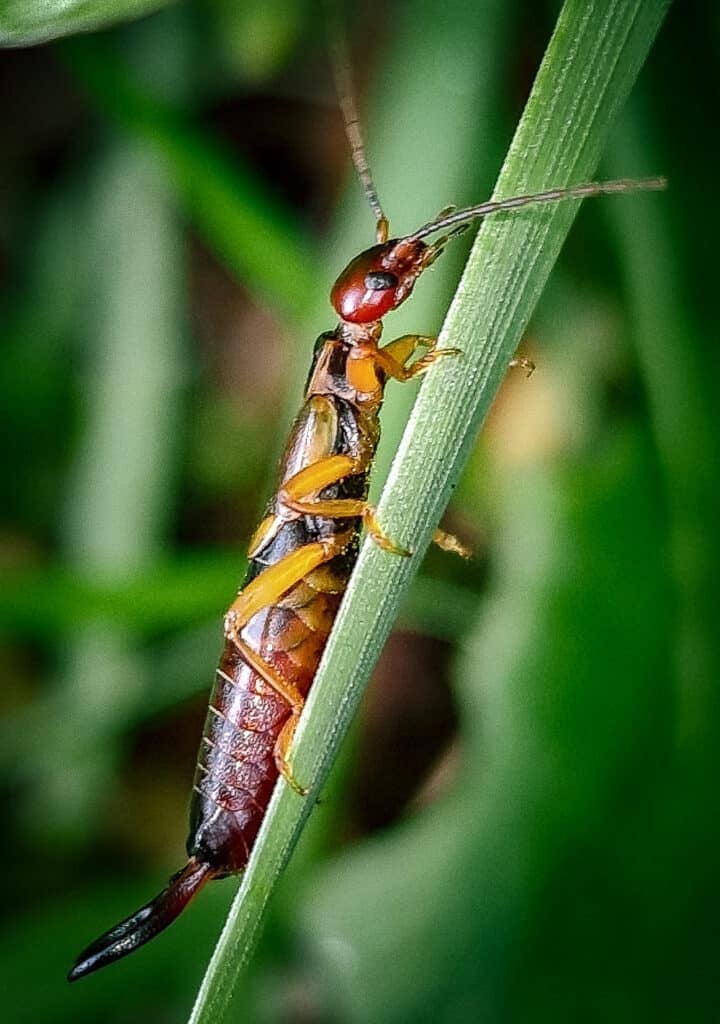Control Cucumber Beetles With A Powerful Organic Playbook
Cucumber beetles could be the big ol’ wrench in your pickle plans this summer. One day you can be admiring the lush, beautiful green growth of your cucumber vines, and the next day you can be stopped short by shock due to the sheer number of cucumber beetles that decided your plants are their Woodstock this summer. The good news is that there are many simple organic methods to help control cucumber beetles in your gardens that do not cost a lot in money or time.
In this article, we will take you through identifying cucumber beetles, and their damage, and how to stop short their life cycles before they become an infestation. Then, we will walk you through all the simple methods you can implement today to help create a healthy bio-diverse backyard garden that will make those hippy bugs consider taking their summer festival to someone else’s backyard.

How to Identify Cucumber Beetles
Cucumber beetles are small yellow or green beetles that can cause significant damage to cucumbers and related plants. Therefore, identifying these pests is crucial to manage them effectively. Here are the key characteristics to look out for when identifying cucumber beetles:
What do Cucumber Beetles Look Like?
Cucumber beetles are small insects with oval-shaped bodies around 1/4 inch long. They can be yellow with black stripes or spots, or solid yellow or green. These beetles have wings covering their bodies and can fly short distances.
There are two main kinds of cucumber beetles: striped and spotted. Striped cucumber beetles have three black stripes on their yellow body, whereas the spotted cucumber beetle has black spots on its yellow or green body.
Despite their physical differences, both types of cucumber beetles can cause severe damage to plants.

BAD BUG BEGONE!
$5.99
Are harmful insects running your gardening season?
Our guide to organic pest control methods offers practical solutions for dealing with common garden pests without using harmful chemicals. With step-by-step instructions and easy-to-follow tips, you’ll learn how to create a pest-resistant garden that is safe for your family and the environment. A great on-hand resource for any gardener!

A must-have resource for Gardeners
Our digital e-book is for you if you’re a home gardener passionate about growing healthy, pesticide-free plants! Over 100 pages of organic pest management information are perfect for beginner gardeners and pros alike.
Where Cucumber Beetles Can Be Found:
In North America, cucumber beetles are commonly found in areas with warm and humid summers. We’ve lived in zones 8A, 2A, and 6B and have seen cucumber beetles in every region. So I guess we all have hot, humid summers.
The beetles are attracted to all cucurbit plants, including cucumbers, squashes, melons, and pumpkins. These beetles will eat plants’ leaves, flowers, and fruit as adults, depositing their eggs around the plant’s soil. Then, as larvae they will eat the plant’s roots. So nothing is safe. If you spot any cucumber beetles in your garden, you need to act fast!
Life Cycle of Cucumber Beetles
Knowing the life cycle of cucumber beetles can help to manage and prevent infestations effectively. You can implement targeted and timely control measures by understanding the various stages of their development. Here is a breakdown of the cucumber beetle life cycle:
Egg Stage:
The cucumber beetle life cycle begins when a female beetle lays eggs in the soil near the base of host plants. The beetle eggs are laid in small clusters of 10 to 20. The eggs are oval-shaped, yellow, and about 1/16 inch in diameter and can be seen with the naked eye.
If you spot adult cucumber beetles, you should look around the base of your plants to see if you can find and destroy any eggs.
The eggs hatch in one to two weeks, depending on environmental factors.
Larval Stage:
Once hatched, cucumber beetle larvae feed aggressively on the roots of the host plants.
The larvae are slender and worm-like, with a yellow or white body and a brown head.
If the eggs have already hatched when you search for them, you may find the larva wriggling into the base of the host plants.
The larvae go through three stages over a period of three to four weeks:
Pupal Stage:
After feeding, the larvae pupate in the soil near the host plant. The pupal stage lasts about one to two weeks, during which the larvae transform into adult beetles.
Adult Stage:
The adult cucumber beetles emerge from their pupae and begin feeding on host plants’ leaves, flowers, and fruit. The adults can live for several weeks and lay hundreds of eggs.

How to Identify Damage Done by Cucumber Beetles
Cucumber beetles can cause significant damage to plants, but identifying the damage they cause can be challenging, as the symptoms can sometimes resemble those caused by other pests or diseases.
Here are some key things to look out for when identifying damage explicitly caused by cucumber beetles:
Symptoms of damage caused by cucumber beetles:
- Feeding damage: Cucumber beetles may chew holes in leaves or eat entire leaves, resulting in a tattered appearance. They may also feed on flowers, causing them to drop prematurely, or eat into developing fruit, causing scars or deformities.
- Wilting: Cucumber beetles can transmit bacterial wilt disease, which causes plants to wilt and die. The condition can usually be evident on one or two branches of the plant before spreading to the entire plant.
- Stunted growth: Larvae of cucumber beetles feed on plant roots, which can stunt plant growth, reduce yields, and even cause plant death.

Plants most damaged by cucumber beetles:
- Cucumbers
- Melons
- Squash
- Pumpkins
Cucumber beetles can also feed on other plants, including:
- Beans
- Corn
- Tomatoes
Implementing targeted pest control measures, such as crop rotation, companion planting, and organic insecticides, can help prevent cucumber beetle damage.

Diseases Spread by Cucumber Beetles
Cucumber beetle physical damage can be dire, but a healthy plant can recover. However, it is not the physical damage that is the biggest problem with cucumber beetle infestation; it’s the diseases the pests carry that can cause complete plant collapse that can cause gardeners the biggest heartaches.
Bacterial wilt disease is a lethal illness that cucumber beetles carry. The bacteria responsible for the disease are present in the beetles’ gut, and when they feed on plants, they can quickly spread the disease from mouth to plant.
Symptoms of bacterial wilt disease can include sudden leaf wilting and unbalanced yellowing of leaves on one side of the plant. Death of a plant can also be a symptom of bacterial wilt disease, as the final stop after the plant succumbs to too much damage to its leaves and roots. Cucumber beetles can also spread other plant diseases, such as squash and mosaic viruses, which can lead to reduced plant yields, stunted growth, and yellowing of leaves.

Organic Methods for Preventing Cucumber Beetles
Prevention is key when it comes to managing cucumber beetles in the garden. Here are some effective organic methods for preventing and controlling cucumber beetles and beetle infestations:
Keep Your Garden Clean and Free of Debris:
Cucumber beetles overwinter in plant debris, so removing plant debris and keeping the area clean during the fall season are simple methods to help prevent cucumber beetles from overwintering in your garden. You can reduce the number of overwintering beetles in your garden by disposing of old plant material and raking up fallen leaves and debris. If they can’t over winter, they tend to leave to find another location.
Crop Rotation:
To prevent cucumber beetle infestations, it’s helpful to rotate crops. These pests lay their eggs in the soil near their preferred plants, and their larvae consume the plant’s roots. To avoid infestations, gardeners should avoid planting cucurbits in the same spot for at least three years and rotate their crops. This method diminishes the number of cucumber beetle eggs in the soil and eliminates food sources, effectively starving future generations out of your garden.
Since cucumber beetles can fly short distances, ensure that cucurbits are planted far from past infestation areas.

Companion Planting:
Companion planting pairs certain crops together to enhance growth, deter pests, or improve soil health. Several companion plants can be helpful when it comes to warding off cucumber beetles. Here are some best practices for using companion planting to prevent cucumber beetle infestations:
- Plant radishes or tansy near cucurbit plants: Radishes and tansy are natural repellents for cucumber beetles. Growing these crops near cucurbits can help deter beetles from feeding on the leaves and fruit of the plants. Tansy has the added benefit of attracting beneficial insects, such as ladybugs, a natural predator of cucumber beetles, which feed on cucumber beetles and their larvae.
- Plant marigolds, nasturtiums, or sunflowers near cucurbit plants: These plants attract beneficial insects, such as ladybugs and lacewings. By planting these flowers near cucurbits, gardeners can encourage the presence of natural predators that can help control cucumber beetle populations.

Row Covers:
Row covers are a physical barrier that can prevent cucumber beetles from accessing host plants. Cover newly planted cucurbit plants with row covers immediately after planting to avoid cucumber beetles from laying their eggs in the soil near the plants. Remove the row covers once the plants start flowering to allow pollination.
We are HUGE fans of row covers. If you have pest pressure, row covers might be your only solution. We’ve implemented row covers for all our brassicas after giving up on brassicas a few years back due to high pressure from cabbage worms. As a result, our brassicas have never looked better!
Traps:
Yellow sticky traps are a type of trap used to monitor and control populations of cucumber beetles in the garden. The traps are coated with a sticky adhesive that captures adult beetles when they land on the trap. Yellow is attractive to cucumber beetles, so the traps are often yellow to enhance their effectiveness.
You will want to place the traps near susceptible plants but also around the perimeter of the garden to trap incoming populations. It is also recommended to place the traps early in the growing season before cucumber beetle populations can become well-established. Place the traps at least two weeks before planting or when seedlings are still small for best results.
It’s important to note that yellow sticky traps should be combined with other pest management strategies, such as crop rotation, row covers, and the application of organic insecticides, for best results. Yellow sticky traps alone are unlikely to eliminate an established infestation of cucumber beetles but can be effective for monitoring the presence and activity of adult beetles in the garden.
When using sticky traps, checking them regularly and replacing them as needed is essential. For example, replace the traps when they become covered with insects or debris or lose their stickiness. In addition, it’s necessary to use caution when handling the traps, as the adhesive can be difficult to remove from skin and clothing.

Beneficial Insects:
Cucumber beetles can be a common pest that damages cucumber plants, but there are a variety of beneficial predator insects that can help control their populations. Here are some ways to attract the best predator insects to deal with a cucumber beetle infestation:
Ladybugs
Did you know that ladybugs can help keep cucumber beetles and their eggs under control in your garden? Consider planting marigolds, sunflowers, and yarrow to attract ladybugs to your garden party. These flowers provide a food source for adult ladybugs, who may choose to lay their eggs nearby.
Lacewings:
Lacewing larvae are known to feed on cucumber beetle larvae, making them an effective natural predator. Plant nectar-rich flowers such as alyssum, dill, and yarrow to attract lacewings to your garden. Lacewings can also be purchased from some gardening suppliers and released in the garden.
Tachinid Flies:
Did you know that Tachinid flies can also help control cucumber beetles in your garden? These marvelous beneficial insects lay their eggs on the cucumber beetles, and their larvae feed on them. You will want to plant flowers like zinnias, sunflowers, and marigolds in your garden to attract tachinid flies. These flowers serve as a food source for adult flies and can entice them to visit your garden.
Spiders
Spiders are your friends if you want to keep your cucumber beetle populations low. These 8-legged predators will happily use your cucumber beetle populations as a food source.
Predatory Nematodes:
Predatory nematodes are microscopic worms that can be added to the soil around cucumber plants. They feed on cucumber beetle larvae and can help reduce their populations. Nematodes can be purchased from some gardening suppliers and added to the soil. Be sure to use them according to the package instructions.
Organic Methods for Combatting Cucumber Beetles
If cucumber beetles have already infested your garden, you can use several organic methods to combat them. Here are some effective organic strategies for battling cucumber beetles:
Handpicking:
Handpicking cucumber beetles and their larvae is an effective way to reduce their numbers. First, check the plants regularly for adult spotted cucumber beetles. Feed them and remove them by hand, dropping them into a container of soapy water. Next, search for any cucumber beetle larvae on plant roots and remove them carefully. This method is time-consuming but can be adequate for small infestations.
Neem Oil:
Neem oil is an organic insecticide that can control cucumber beetles. The oil disrupts the insect’s feeding and reproduction, eventually causing them to die. Mix neem oil with water according to the package instructions and spray the plants thoroughly, covering the leaves, flowers, and fruit. Reapply the neem oil every 7-14 days or after rainfall.
Spinosad:
Spinosad is another organic insecticide that can be used to kill cucumber beetles. This insecticide is derived from a soil bacterium and is toxic to cucumber beetles and their larvae. Mix spinosad with water according to the package instructions and spray the plants thoroughly, covering the leaves, flowers, and fruit. Reapply spinosad every 7-14 days, or after rainfall.

Kaolin Clay:
Kaolin clay is a natural product that can control and eliminate cucumber beetles. The clay forms a physical barrier on the plant’s leaves, making it difficult for cucumber beetles to feed. Mix kaolin clay with water according to the package instructions and spray the plants thoroughly, covering the leaves, flowers, and fruit. Reapply the kaolin clay every 7-14 days or after rainfall.
Combating Cucumber Beetles In the Healthy Organic Garden
As this article has shown, managing cucumber beetles in your backyard garden can be done effectively and organically with simple techniques.
From using row covers to planting trap crops and incorporating natural predators, there are plenty of ways to protect your cucumber plants without harmful chemicals.
By being proactive and implementing these strategies early in the season, you can prevent cucumber beetle damage and enjoy a healthy, bountiful harvest. So don’t let those pesky beetles get you down – try these organic methods and see the difference they can make in your backyard garden!

Author: Laura Kennedy
Writer & Owner of Little Yellow Wheelbarrow
Laura is a highly skilled gardener and fervent flower enthusiast. Despite her playful battle with plant spacing guidelines, Laura’s work inspires gardeners to create thriving, beautiful spaces that reflect both creativity and sustainability.












